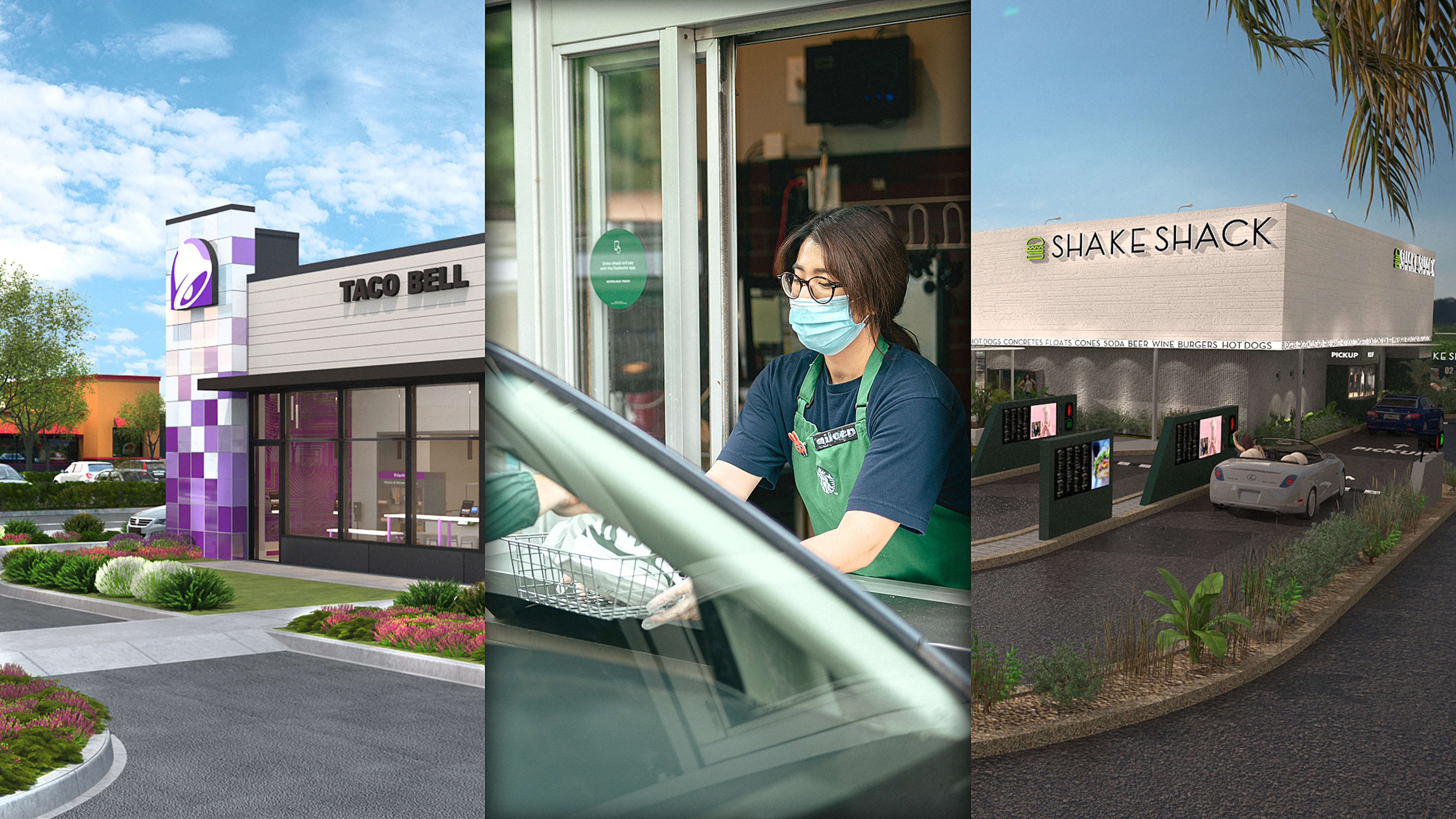During COVID-19, dining rooms have closed, and many prudent people have avoided dining in restaurants altogether. It’s a heartbreaking situation for independently owned restaurants across the country, as countless mom and pops have closed their doors never to open again.
Meanwhile, fast-food and fast-casual chains have seized the opportunity to claim the market and expand their reach. Overall revenue has still taken a roughly 30% nosedive across the board in 2020, in an industry estimated to be worth $290 billion domestically. But McDonald’s same-store revenue (the revenue at each individual store) is down a mere 2.3% in June from April. Popeye’s reported same-store growth of nearly 25%, as its chicken sandwich continues to lure diners in. A major reason? The drive-through window.
While drive-throughs have been a staple of fast-food revenue for decades, representing 65% or more of a store’s revenue, they’ve only become more popular in 2020. According to one recent poll, 74% of Americans have visited a drive-through the same amount or more often than usual this year.
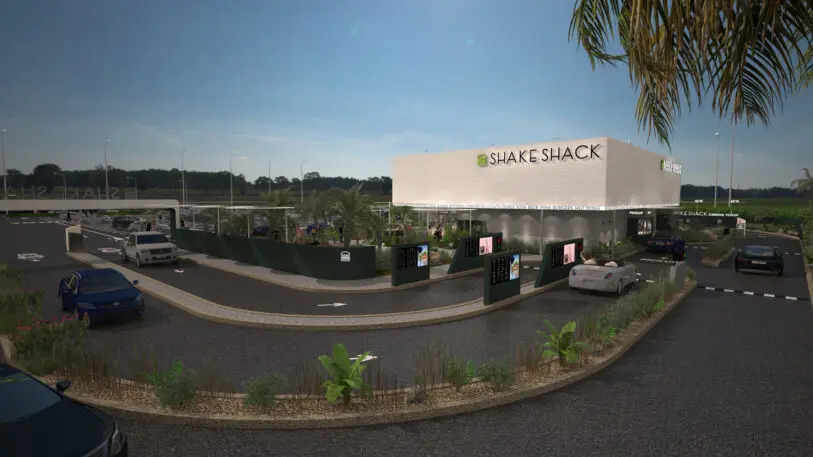
From a car.
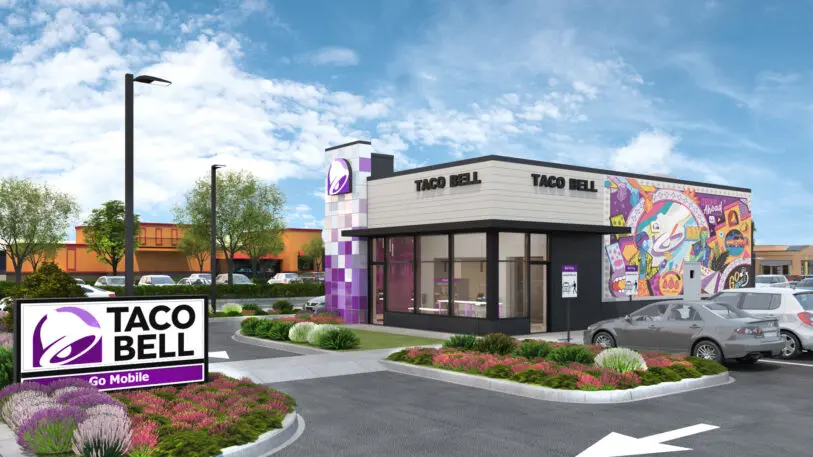
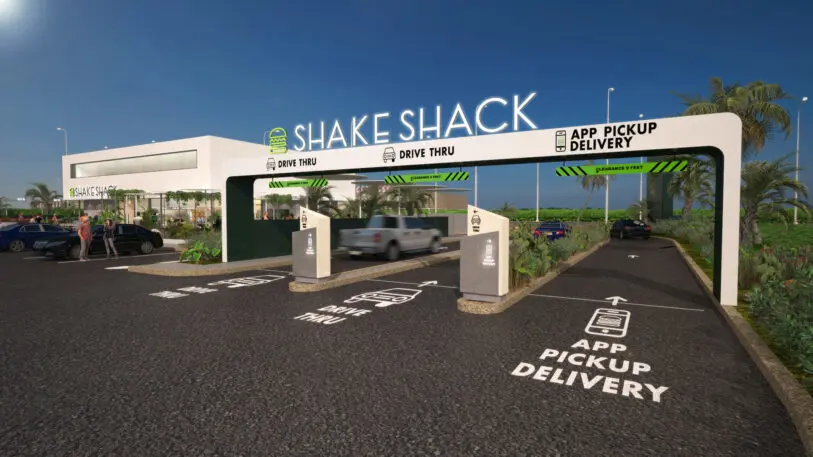
The need for speed
Four minutes. Watching Netflix, it’s no time at all. But sitting in a line, in your car, any more than that can feel like an eternity. In the drive-through world, speed is the most important metric. A long line might lose customers who drive by and decide it’s just not worth the wait.
Taco Bell has spent the past five years aiming to break the four-minute drive-through wait. Once it did, in late 2019—through streamlining kitchens and adding order kiosks in stores to free up employees, among other things—it set a new benchmark: three minutes. “I think four minutes was significant at the time because the industry had slowed down. As menus became bigger, tech hadn’t been integrated into the experience,” says Grams. “Businesses had outgrown the processes to execute it.”
Indeed, drive-throughs added 20 seconds onto the average wait in 2019 alone. Nowhere was this more apparent than the most popular restaurant chain in the United States, McDonald’s, which recognized just in time the mess it was in.
In late 2018, after years of slowdowns, McDonald’s prioritized speeding up its drive-throughs. “Quite frankly, we’d taken our eye off the ball a little bit,” says Bill Garrett, SVP of operations at McDonald’s. “We spent an enormous amount of energy and time in 2019 to build a stronger drive-through foundation, and that was really quite fortunate to us, because [since] COVID, when it was clear customers found drive-through not just convenient but a safer way to interact, [that] helped us a lot.”
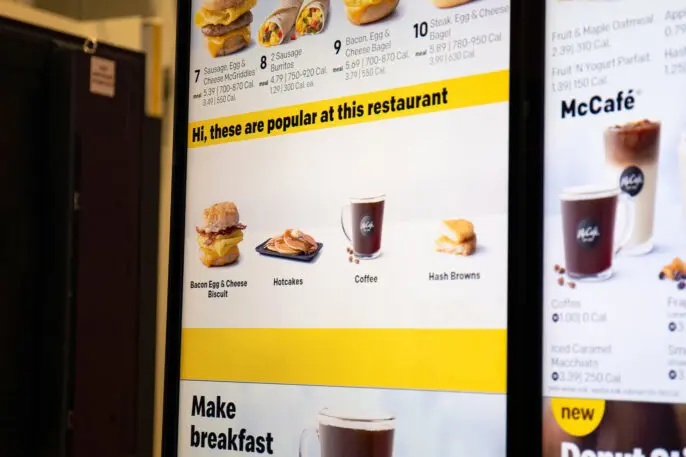
This doesn’t just expedite the back of the house. It speeds up ordering, too. Taco Bell simplified its menu recently, removing a dozen menu items in July—including long-standing mainstays like Nachos Supreme and the 7-Layer Burrito. “The menu has to fit the experience. You have to navigate it well,” says Grams. “It can’t have 140 choices and be fast.”
As for Starbucks: It has an updated espresso machine, the Mastrena II, which can pull shots in a more automated fashion. Meanwhile, it has introduced an entire AI back end, called DeepBrew, to help juggle orders. The most visible benefit of this tech is a new labeling system, which can funnel orders from Uber Eats, people in their car, or the app, and queue these cups up for baristas to knock out next.
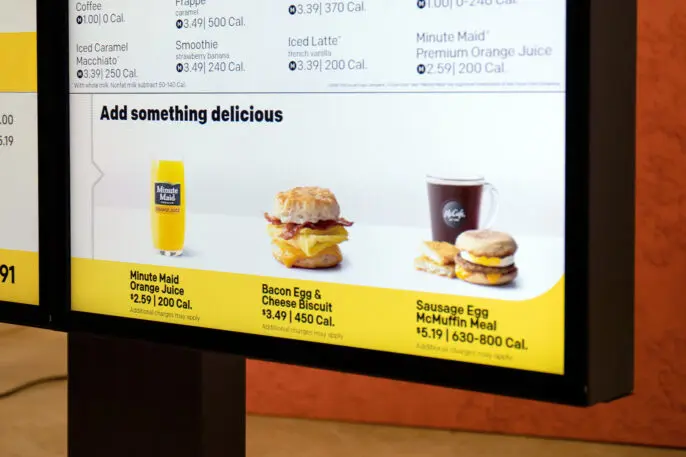
Rethinking the menu board
How people feel about drive-throughs is as important as how fast they actually are. Some people feel anxious using a drive-through, as they wait in line, scan countless items trying to remember their family’s order, and fumble around for their money—problems the pandemic has only exacerbated. “COVID has created this sense of urgency,” Grams says. “[We need to be] a calming place . . . fast and easy.” And a lot of that comes down to rethinking the biggest mainstay of drive-throughs: the menu board.
The menu board has gotten easier to read, thanks to simplified menus. That trend will only continue, as McDonald’s spent $300 million in 2019 to acquire the AI company Dynamic Yield. Using predictive technologies, its new digital menu boards can tailor the menu for time of day, weather, and even current restaurant traffic (meaning items that take a long time to prepare might be de-emphasized during a rush). McDonald’s talks a lot about the “personalization” of ordering into the future, and it’s easy to imagine how that could play out in menu boards one day: If you never, ever order nuggets, maybe they shouldn’t be prominent on the screen, or listed at all. Starbucks, which also has digital menu boards, has considered allowing consumers to opt in to being identified upon driving up, to get personalized recommendations.
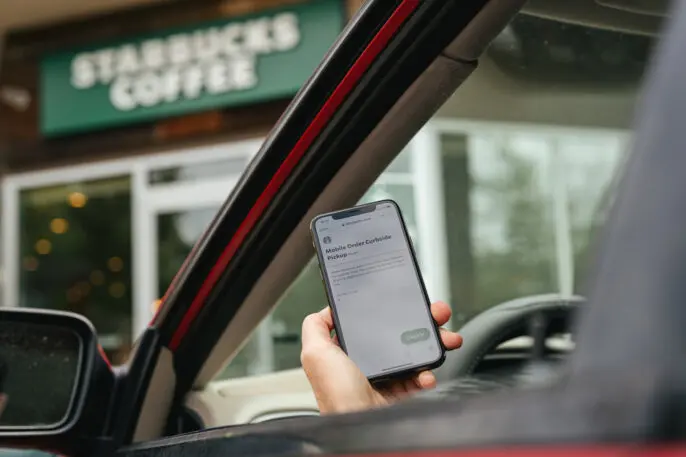
Taco Bell will begin offering a mobile priority lane at many of its stores, as part of an incentive to order on mobile—a way to essentially cut the line of the menu board. Using GPS geofencing, the app can detect when you pull into the lot, to ensure that your order is good to go when you arrive.

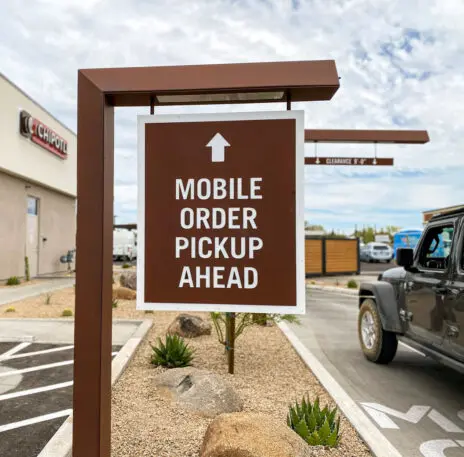
More stores, and new store designs
To widely adopt drive-through, however, Chipotles will have to change how they’re built. And it’s part of a larger trend of fast-food store expansion and redesign that we’ll see across the industry in the coming years. Starbucks will be building hundreds of its leaner pickup stores across the country in the next three to five years. Taco Bell recently unveiled its Go Mobile store, which adds that aforementioned mobile lane, but halves its footprint to 1,300 square feet by cutting out most of the dining room. (Taco Bell plans to build another 200 stores a year as long as market conditions are favorable.)
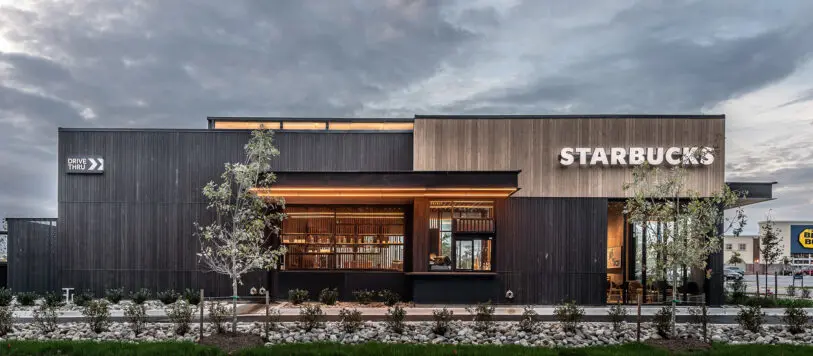
“It’s mostly real estate,” says Chipotle CFO Jack Hartung. “If you’re looking at a site in between two [existing] locations, if you can go into a 1,400- or 1,200-square-foot space, instead of 2,200, your investment goes down . . . real estate taxes go down . . . labor costs go down, too . . . [the] HVAC cost is lower. Generally, if we open up a small location with a Chipotlane, digital sales will be higher, and we need less labor.” There also aren’t an unlimited number of 2,000-square-foot locations, Hartung points out. At a certain point, if you want to add hundreds or thousands of new stores over time, you have to be more flexible with their size. As Chipotle plans to roughly double its footprint to 5,500 stores in the future, its smaller stores might not have any seats at all.
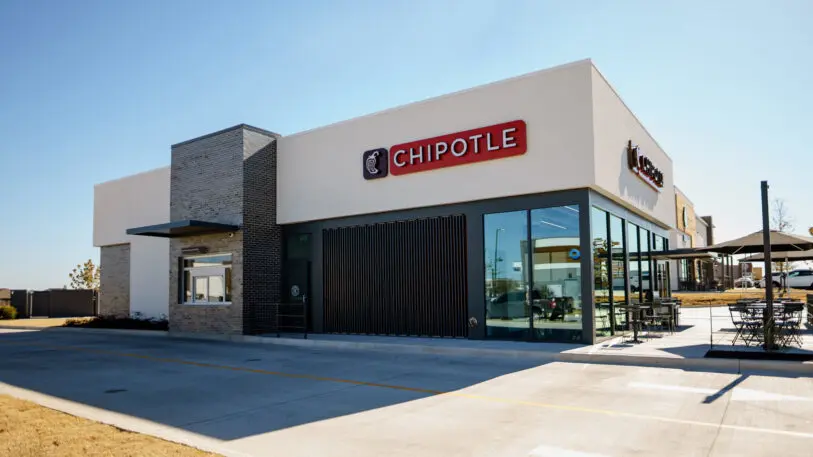
But what about the existing 2,000 or so Chipotles out there today that don’t have drive-throughs? These will likely be retrofitted to add drive-throughs, where possible, a process that isn’t as easy as it looks.
These stores need a hole drilled into the wall, and often, for parking spots along the side of the building to be removed for cars to drive up—along with additional space made through the lot to accommodate any line of cars. (The most crucial operational component, a second line to make food for digital orders, has already been installed at most Chipotles.)
It’s enough work to retrofit old stores that Chipotle would have avoided it before COVID-19. Now, it’s reconsidering, knowing that drive-throughs are important (plus, it has the leverage over landlords that one-off restaurants don’t).
“With COVID, a lot of restaurants are, unfortunately, not going to make it . . . [and] landlords are much more agreeable. As we get to the end of our initial term . . . now we have a conversation with landlords: Do we want to exercise the lease the option to extend for another five to 10 years?” says Hartung. “Well, the discussion now is about, ‘Gee, we’d like to stay, but we’d really like a Chipotlane. If you let us remodel the store, we’ll stay. If you don’t, we’ll move across the street.'”
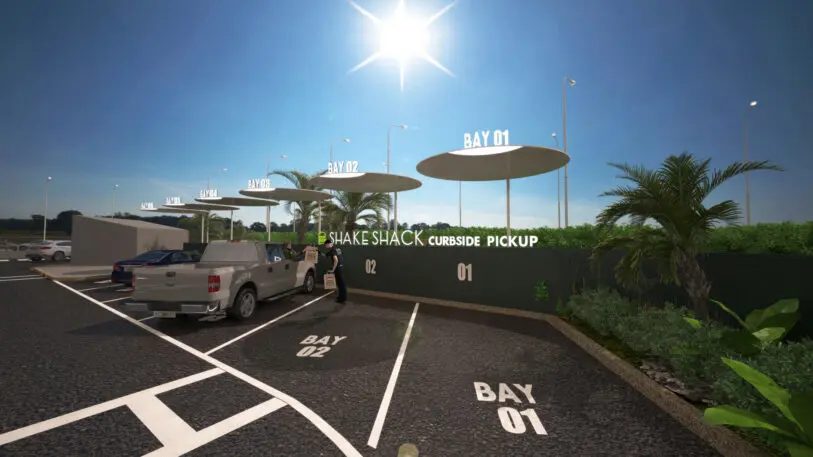
Drive-through will also be drive up, a system of lockers, and even a place to eat
The last way that drive-throughs are changing is that the drive-through itself will no longer be about having one, two, or even Shake Shack’s three drive-through lanes. Indeed, the entire parking lot will become increasingly important for pickup operations as it transitions from being less about parking a car while eating inside a dining room, and more about being a place to wait for your order to be ready.
Starbucks made this shift quickly as COVID-19 hit and its dining rooms closed. As the company’s COO, Roz Brewer, explained to me in June, the company’s 2025 plan, emphasizing digital pickup, was prioritized to launch ASAP. Knowing 80% of its business was already to-go, and only about 60% of stores had drive-through, the company created a curbside pickup model to meet socially distanced demand. By the end of this quarter, Starbucks plans to offer curbside pickup as an option in up to 1,000 locations, with curbside pickup orders being another option you can choose in the app. In urban areas, where drive-throughs and curbside can’t work, Starbucks will open hundreds of new Starbucks Pickup stores, which feature walk-up options with no seats.
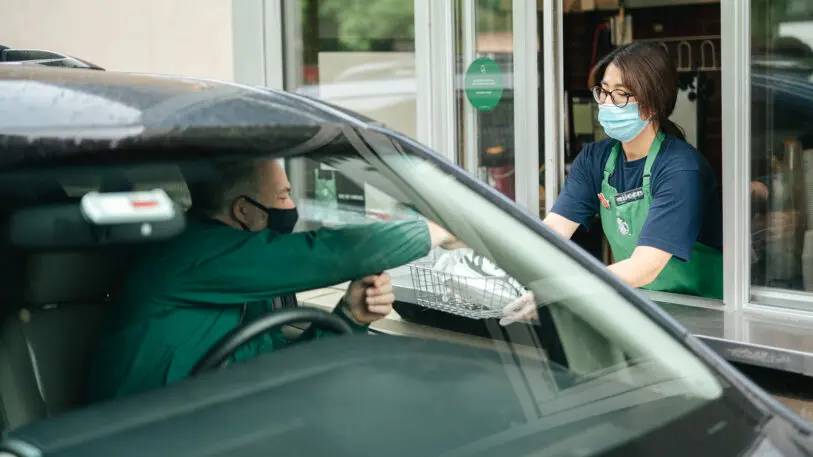
A cubby, of course, is less convenient. Suddenly your drive-through order is forcing you to get out of your car. That’s why Taco Bell imagines that, using its new rewards program, it could incentivize the effort. “You will be offered the opportunity, ‘Look your wait is going to be longer. We’ll help you with a rapid pickup, then reward you for the choice that keeps everyone moving,'” says Grams.
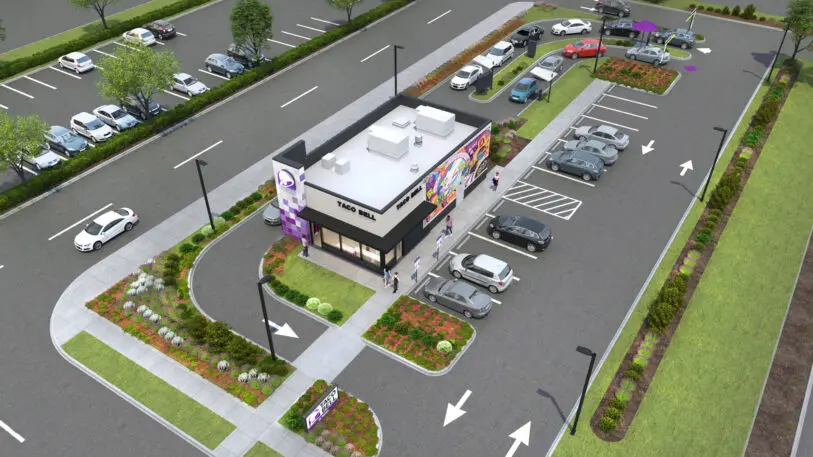
In other words, to see the fast-food chain of the future, simply walk to your car, open the door, and take a seat. Because you’ve just arrived.
Recognize your brand’s excellence by applying to this year’s Brands That Matter Awards before the final deadline, June 7.
Sign up for Brands That Matter notifications here.
